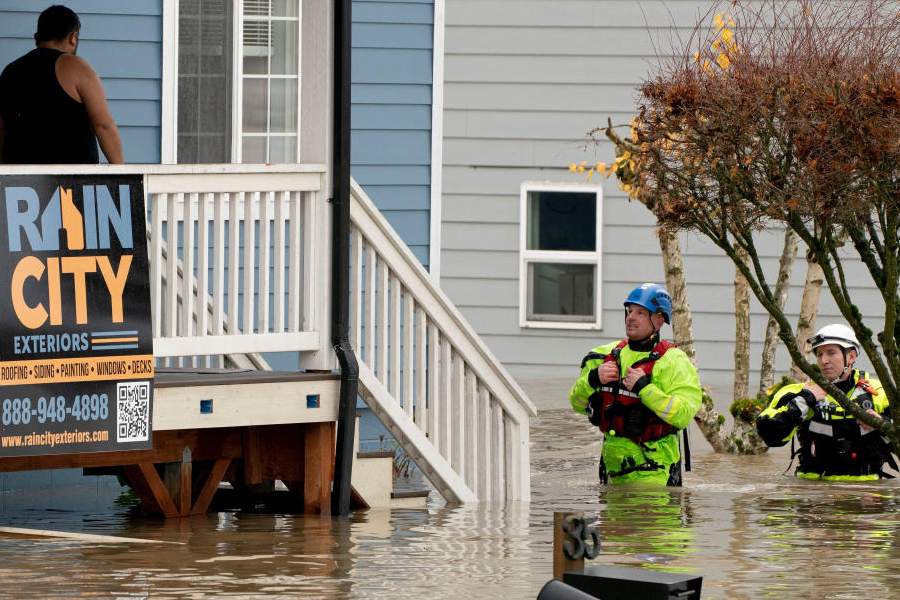 Saturday, 13 December 2025
Saturday, 13 December 2025
 Saturday, 13 December 2025
Saturday, 13 December 2025
The Delhi government, in collaboration with IIT-Kanpur, conducted cloud-seeding trials in parts of Delhi on Tuesday, with more such exercises planned over the next few days, Environment Minister Manjinder Singh Sirsa said.
Environmentalists, however, termed the Delhi government's cloud-seeding trial a short-term measure, saying it may temporarily reduce pollution but fails to address the root causes of the capital's deteriorating air quality.
According to officials, the aircraft took off from Kanpur for Delhi and covered areas like Burari, north Karol Bagh and Mayur Vihar before landing at the Meerut Airfield.
"The Cessna aircraft took off from Kanpur. It released eight fire flares each weighing 2 to 2.5 kilograms and the trial lasted for half an hour. Each flare lasted for two to two-and-a-half minutes. The clouds had a humidity of 15 to 20 per cent. The flares were released for 17 to 18 minutes," Sirsa said in a video statement.
He added that IIT-Kanpur has opined that rain could happen within 15 minutes to 4 hours after the trial.
"However, the rainfall won't be heavy since the humidity levels were only at 15 to 20 per cent," the minister said.
Meanwhile, the second trial was also conducted later in the day in outer Delhi.
Nine to 10 such trials are planned over the next few days, Sirsa said, adding that since IMD has informed that the wind direction is towards north, areas falling under that region are being targeted.
"This is a huge step taken by the government to mitigate pollution. If trials are successful, we will prepare a long-term plan till February. We hope that if this is successful, it will be a first such scientific step in India to reduce polluton," he added.
According to sources, IIT Kanpur successfully executed the operation over Delhi, in a corridor measuring roughly 25 nautical miles in length and 4 nautical miles in width with the largest distance covered between Khekra and little north of Burari.
The first round involved six flares released at an altitude of nearly 4,000 feet above ground level, with a burn duration of eighteen-and-a-half minutes. A second flight took off at 3:55 pm, deploying eight flares at a higher altitude of around 5,000-6,000 feet.
Following the second trial, Sirsa, in a post on X, said the Cessna aircraft took off from Meerut Airport for Delhi and released cloud seeding flares in different areas.
The team from IIT-Kanpur has expressed hope for good results from these systematically conducted experiments, he said.
"Based on the success of these trials, cloud-seeding will be used extensively in Delhi for pollution control under the leadership of Chief Minister Rekha Gupta," he added.
The trial, aimed at inducing artificial rain to tackle air pollution in the capital, is part of the Delhi government's broader strategy to mitigate deteriorating air quality during the winter months.
The government had conducted a test flight over Burari last week. During the test run, small quantities of silver iodide and sodium chloride compounds used to trigger artificial rain were released from the aircraft.
However, due to low atmospheric moisture of less than 20 per cent, as against the 50 per cent typically required for cloud seeding, rainfall could not be induced.
The Delhi government signed a memorandum of understanding with IIT Kanpur on September 25 to carry out five cloud seeding trials, all of which are planned in northwest Delhi.
The Directorate General of Civil Aviation earlier granted permission to IIT Kanpur to conduct the trials any time between October 1 and November 30.
Clearances have also been secured from more than 10 central and state departments, including the Union ministries of environment, defence and home, the Uttar Pradesh government, the Airports Authority of India, and the Bureau of Civil Aviation Security, among others.
The Delhi Cabinet on May 7 approved a proposal to conduct five cloud seeding trials at a total cost of Rs 3.21 crore.
However, the exercise faced multiple postponements due to unfavourable weather and monsoon conditions, including deadlines set for May-end, early June, August, September and, most recently, the second week of October.







